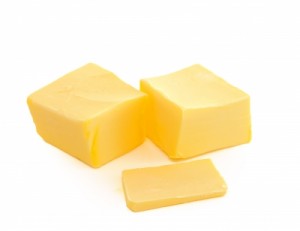 We are a sleep-deprived nation. A recent study revealed that 70 million Americans do not get adequate sleep. Experts say we need seven to nine hours a night consistently, but many of us get about five to seven. Furthermore, while our bodies were made to recover from one interrupted night’s sleep, studies now show that less than optimal sleep for a few nights in a row can change your sleep pattern, weaken your immune system and lead to an increased likelihood of weight gain, Type 2 diabetes, heart conditions, loss of long-term memory and more. Even one off night can increase your blood sugar levels and impair your sensitivity to insulin.
We are a sleep-deprived nation. A recent study revealed that 70 million Americans do not get adequate sleep. Experts say we need seven to nine hours a night consistently, but many of us get about five to seven. Furthermore, while our bodies were made to recover from one interrupted night’s sleep, studies now show that less than optimal sleep for a few nights in a row can change your sleep pattern, weaken your immune system and lead to an increased likelihood of weight gain, Type 2 diabetes, heart conditions, loss of long-term memory and more. Even one off night can increase your blood sugar levels and impair your sensitivity to insulin.
Sleep is directly linked to many mental processing functions including maintaining a positive mood (and managing irritability, anxiety, anger and depression), brain activity, learning, memory, concentration and our ability to handle stress. Many experts now say sleep is as important to your health and wellness long-term as a healthy diet and exercise.
Let’s look at what happens in a typical night of sleep.
Sleep Cycles and REM
Our bodies know whether we are awake or asleep through nerve signaling chemicals called neurotransmitters, which act on nerve cells, or neurons, in the brain. Some neurotransmitters, such as serotonin and norepinephrine, are produced in the brainstem, where the brain and the spinal cord connect. These keep parts of the brain active while we are awake. Other neurons located in the base of the brain appear to turn off the signals that keep us awake. A chemical known as adenosine is now shown to build up in our bodies and cause drowsiness; it then breaks down while we sleep. Healthy functioning of these neurons is required for normal sleep cycles.
There are five phases of sleep: They are known as sleep cycles 1,2,3,4 and REM (or rapid eye movement.) We pass through all five, building up from 1 to REM and then begin the cycle all over again. We spend about 50% of our total sleep time in stage 2, about 20% in REM and the remaining 30% spread out across the other sleep cycles. (Infants spend 50% of their sleep in REM.)
Stage 1 sleep is very light sleep, where we drift in and out, our eyes move slowly, our muscle activity slows down and we can be awakened easily. We may make sudden muscle contractions in this stage or remember visual image fragments. In Stage 2, eye movement stops and brain waves become slower. Stage 3 brings in very slow waves, known as delta waves, as well as some smaller faster waves. In stage 4, we are almost exclusively in a delta wave phase.
Stages 3 and 4 are considered to be deep sleep and it’s hard to awaken someone from those stages; those awakened don’t adjust immediately. It takes a few minutes for them to stop feeling groggy and disoriented. In this phase, kids may experience night terrors or bedwetting and adults and kids both may sleepwalk.
After stages 3 and 4 deep sleep, we enter REM during which, true to its name, our eyes move rapidly in many directions. Our muscles become temporarily paralyzed and our breathing becomes irregular and more rapid and shallow. During REM, we dream.
Each sleep cycle takes 90-110 minutes on average, with our first REM cycle typically occurring 70-90 minutes after we fall asleep. During the first cycle, the REM period is relatively short, with longer periods of deep sleep. But as we progress through the night, REM cycles get longer and deep sleep cycles become shorter. By the time we awaken in the morning, most of our time is spent in sleep stages 1, 2 and REM.
Caffeine, diet pills and other stimulants can cause insomnia, or an inability to fall asleep. Alcohol can help you fall asleep, but keeps you in lighter stages of sleep and limits deep sleep and REM. Antidepressants can suppress REM sleep cycles. Heavy smokers often stay in lighter sleep stages and have less REM sleep. They may also wake after three to four hours due to nicotine withdrawal. Temperature changes disrupt REM as well.
Research shows that if we miss one normal REM heavy sleep cycle, the next time we sleep, we will go quickly into REM and stay there longer, to make up for lost sleep. But after a couple nights of disrupted sleep in a row, our bodies will no longer compensate and drop into REM. They will simply adapt to the new sleep cycle, shifting the sleep balance away from the healing and restorative deep and REM sleep cycles.
Spending less time in the healing deep sleep cycles affects your immune system, as your body cannot repair, restore and rebalance as it is meant to with less time in deep and REM sleep. Research also shows a number of interesting connections between health and insufficient sleep, including metabolic function and cardiovascular disease.
Sleep and the Connection to Health
In one study, after only three nights of deep and REM sleep suppression, participants became less sensitive to insulin; they required more insulin to dispose of similar amounts of glucose, but the body did not compensate by increasing insulin levels. They had reduced glucose tolerance and an increased likelihood of developing Type 2 diabetes. The study equated the decrease in insulin sensitivity to gaining 20 to 30 pounds.
Recently, a groundbreaking study showed that the body’s metabolic functions could be disrupted by only one night of inadequate sleep. In this study, participants were examined after a normal eight-hour night of sleep and also after a night of only four hours of sleep. The study revealed that “Insulin sensitivity is not fixed in healthy subjects, but depends on the duration of sleep in the preceding night,” according to Dr. Esther Donga, of the Leiden University Medical Center in the Netherlands and lead author of the study.
Another study monitored participants after two nights of regular sleep and then five nights of sleep restriction. After five nights of only getting four hours of sleep, the results indicated a statistically significant decrease in the heart rate variability, which can result in cardiological and non-cardiological diseases, according to Siobhan Banks of the University of Pennsylvania School of Medicine.
A recent study of insomniacs showed that sleep deprivation also increased the risk of hypertension. Those who slept for less than five hours had a 500% higher risk for hypertension than those who slept for six hours or more. Insomniacs with sleep cycles of five to six hours a night had a 350% higher risk of hypertension than normal sleepers.
Another study revealed that four nights of REM sleep deprivation reduced cell proliferation in the part of the forebrain that is responsible for long-term memory.
And a 16-year study revealed that women who slept for five hours a night were 32% more likely to gain weight (defined as an increase of 33 pounds or more) and 15% more likely to become obese versus women who slept for seven hours. Six-hour-a-night sleepers fared a little better, with a 12% increase in major weight.
If you struggle with falling asleep or sleeping through the night (many people say they are able to fall asleep but then wake up at 2am and find themselves unable to fall back asleep again): Try magnesium.
When I experienced sleep disruptions from hormonal imbalances a few years ago, I read about magnesium as a potential solution. (If you are going through perimenopause, magnesium may become your new best friend!) Magnesium and calcium need to be eaten/taken together in balance, typically a 1:1 ratio, but many of us are calcium heavy and magnesium deficient, which can disrupt sleep.
In fact, new studies say 99% of Americans are magnesium deficient, a topic I covered in a separate article. This isn’t surprising considering how dairy-heavy our diet is and how many people take calcium supplements to support bone health. Even if you take a calcium/magnesium combo, it is likely that you aren’t shifting the ratio, just your total intake.
If calcium and magnesium are 1:1 in the supplement, you’re likely still imbalanced; you just added more of each to the mix. But many are heavier on calcium than they are on magnesium, increasing the existing imbalance even further. Getting them into balance at whatever level you are at is the key, which means more magnesium for most of us.
I bought magnesium and took the standard dosage and found it let me sleep continuously through the night. I have since recommended it to many people who have reported great success. At the time, I bought whatever I could find at the store, which was elemental magnesium from Doctor’s Best. I still take it as does my son who has suffered from migraines.
Now more research has been done on magnesium and one doctor has achieved amazing results using a specific form of magnesium known as magnesium chloride. Dr. W. Davis, an author and cardiologist practicing in Milwaukee, Wisconsin, reported that “sleep was induced rapidly, was uninterrupted, and that waking tiredness disappeared in 99% of the patients. In addition, anxiety and tension diminished during the day” after supplementation with magnesium chloride.
Some women I know prefer liquid magnesium, which you rub on your body and allow to be absorbed into your skin, over taking pills. But while different people take different forms, most all report improvement in sleep quality when taking magnesium. So if you are struggling with restful sleep through the night, it is definitely worth a try.
Even though our busy lives tempt us to put off sleep in favor of getting more things done, if you want to live a longer, healthier life, make a good night’s sleep a priority: you’ll have more energy—and feel better—tackling your tasks the next day. Adequate deep restful sleep ensures the body can heal and repair and perform the many functions required for good health: making sleep a priority is one of the best things you can do to stay (or become) fit and healthy.
To your wellness and health: your true wealth!
Inger
Author: Inger Pols is the Editor of the New England Health Advisory and Author/Creator, Finally Make It Happen, the proven process to get what you want. Get a free special report on The Truth About Sugar: It’s Not All Equal and a free copy of Inger’s bestselling ebook at www.IngerPols.com/freegifts
Photo Source: courtesy of imagerymajestic / Free Digital Photos

 I’ve had the issue of detoxification on my list of articles to write for some time because it’s such an important part of a healthy lifestyle. The foods we eat, the chemicals we put on our face and skin, inhale in our homes and outside, and ingest through our cooking have been shown to cause cancer, lead to sex changes in animals, and overwhelm our immune systems.
I’ve had the issue of detoxification on my list of articles to write for some time because it’s such an important part of a healthy lifestyle. The foods we eat, the chemicals we put on our face and skin, inhale in our homes and outside, and ingest through our cooking have been shown to cause cancer, lead to sex changes in animals, and overwhelm our immune systems.

 We have all read and heard about the many benefits of exercise. Exercise has been shown to lower your risk of heart disease, type 2 diabetes, osteoporosis, improve cognitive function, fitness, improve your mood and reduce depression, and reduce the risk of cancer. It’s also been shown to change the T cells in cancer patients from unhealthy to healthy and create a low sugar environment that discouraged the growth and spread of cancer cells in patients who are already diagnosed.
We have all read and heard about the many benefits of exercise. Exercise has been shown to lower your risk of heart disease, type 2 diabetes, osteoporosis, improve cognitive function, fitness, improve your mood and reduce depression, and reduce the risk of cancer. It’s also been shown to change the T cells in cancer patients from unhealthy to healthy and create a low sugar environment that discouraged the growth and spread of cancer cells in patients who are already diagnosed.
 Follow me on Twitter
Follow me on Twitter 